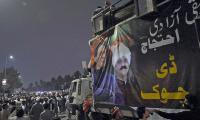One year has passed since the ‘Unite the Right’ rally in Charlottesville, Virginia, in which Nazis, neo-Confederates, Ku Klux Klansmen and others engaged in acts of violence, resulting in a man ramming his car into a crowd of antiracist protesters, killing one woman.
The gathering of white supremacists, however shocking, was a reminder of the ubiquity and normalisation of racism in the US. The proliferation of right-wing domestic terrorists, acts of racial violence and the promulgation of government policies intended to harm racial, ethnic and religious minorities are evidence that the US has failed to come to terms with its original sin of slavery and genocide.
The tiki-torch-wielding white nationalists in Charlottesville were unabashed in their extremist hate, as they chanted such curious and offensive slogans as ‘You Will Not Replace Us’, ‘Jews Will Not Replace Us’, ‘Blood and Soil’ and ‘Russia is Our Friend’. President Donald Trump, who refused to condemn the hate groups and their violence, made false equivalencies between the Nazi demonstrators and the antifascist counter-demonstrators. He defended the white supremacists – who happen to be the greatest domestic terror threat in the country – and claimed, “You had some very fine people on both sides”. Since the election of a man who incited racial violence in his campaign rallies, Islamophobic, anti-Latinx and other hate crimes have increased.
Trump, who has pandered to white supremacists, enjoyed their support in the 2016 election and received Nazi salutes upon his victory, and has kept their donations for the 2020 race, has constructed a government for the benefit of white Americans. The red baseball caps inscribed with the Trumpian motto ‘Make America Great Again’ are akin to “this generation’s Ku Klux Klan hood”, as rapper Pusha-T has suggested. “When was America so great anyways? Name that time period?” he said.
After Barack Obama, the nation’s first black president, the US experienced a white racial backlash against the browning of the nation, a revanchist yearning for the pre-1960s glory days when white men reigned supreme and black people knew their place and had no rights – paving the way for Trump. And the barnstorming reality-show swindler has weaponised his inflammatory rhetoric and offensive tweets, using his executive power over the government to codify white supremacist sentiments into law.
In a nation of ‘white fragility’, white people who are thin-skinned and insulated from discomfort on racial issues shudder when confronted with their racism. The US has always been a nation in which racism and white-skin privilege are normalised. However, in recent years white racists have been empowered, made to feel comfortable with open displays of racial hostility and toxic behaviour. Meanwhile, a segment of the white US is aggrieved, believing they are ‘victims of genocide’ through immigration, sanctuary cities, civil rights and programs of diversity and inclusion.
Trump dehumanised Latin American and black immigrants by characterising them as criminals, people from “sh***ole countries” who are sending “not their best people”. The separation of migrant children from their parents at the border and placement in internment camps is a prime example of the Trump administration’s foray into fascism and genocide. Some of these children may never be reunited with their families and will forever be traumatised.
This article has been excerpted from: ‘Charlottesville on year on: Cauldron of racism is still seething.’
Courtesy: Aljazeera.com
Data, today, defines how we make decisions with tools allowing us to analyse experience more precisely
But if history has shown us anything, it is that rivals can eventually unite when stakes are high enough
Imagine a classroom where students are encouraged to question, and think deeply
Pakistan’s wheat farmers face unusually large pitfalls highlighting root cause of downward slide in agriculture
In agriculture, Pakistan moved up from 48th rank in year 2000 to an impressive ranking of 15th by year 2023
Born in Allahabad in 1943, Saeeda Gazdar migrated to Pakistan after Partition







